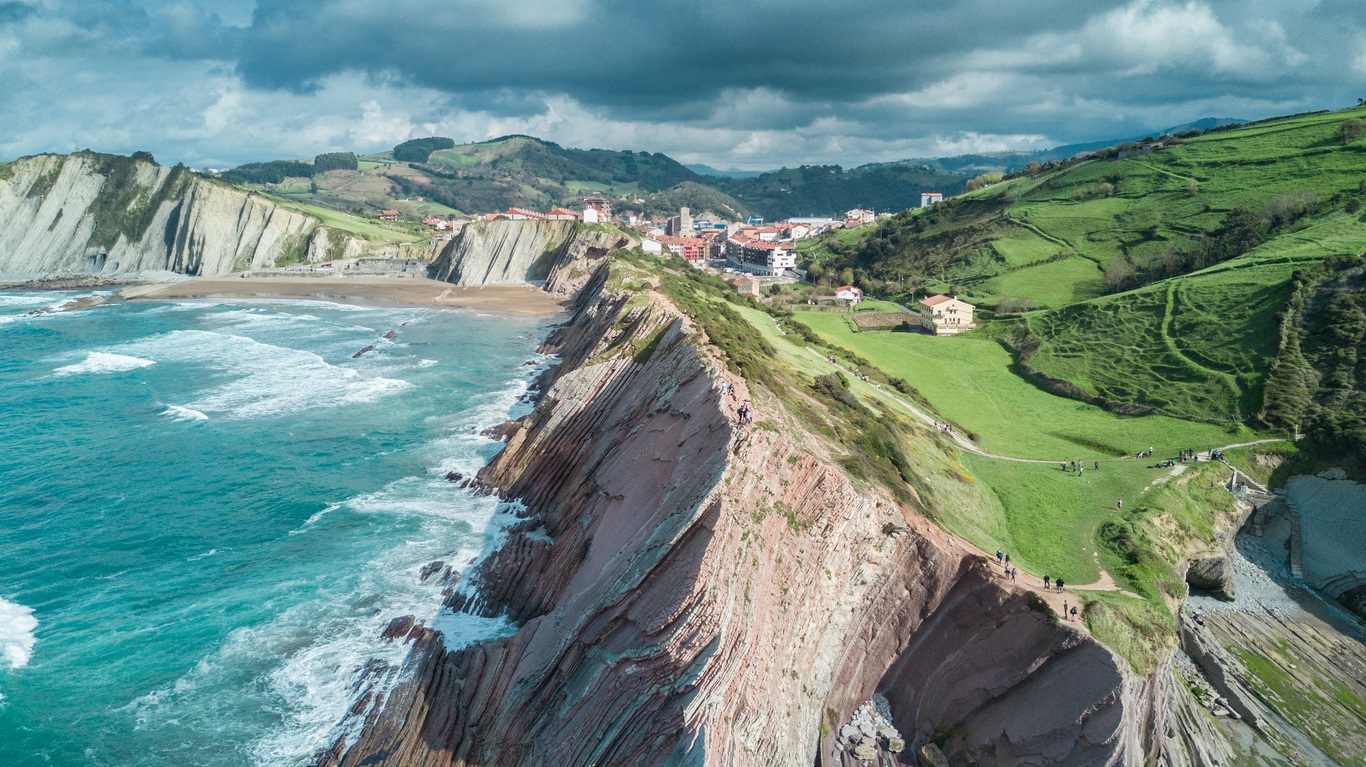Learn About Visiting the Rías Baixas Wine Region in Spain
Wine experts will already be familiar with Albariño and Spain’s prized whites. Vineyards stretch along the wild coast of Galicia in the midst of some of the country’s most spectacular scenery. The Rías Baixas region is off the familiar tourist trail, but it’s a rewarding destination for anyone who appreciates superb wine, seafood, history, and an epic landscape.
Featured Above: Spain’s Galician Coastline near Rías Baixas in northwestern Spain.
When wine-lovers reach for a robust Spanish red, the province of La Rioja is the name that has global brand recognition. So successful is the reach of the north-eastern Spanish province that Rioja has become almost synonymous with Spanish wine.
ALSO SEE: 22 Top Rioja Wineries You Can’t Miss on Your Next Trip to Spain
Albariño and Rías Baixas
When it comes to the realm of Spanish white wines, Albariño is beginning to enjoy similar recognition. Experts have long regarded the grape as among the most complex and interesting European varieties, and consumers are catching up, appreciating it as the perfect accompaniment to seafood and salad. Its clean crisp flavors with high acidity and floral and fruity aromas have made it one of the most fashionable whites globally. Many Californian vineyards are now cultivating their own Albariño vines, as are unexpected wine regions like the Finger Lakes in New York State.
At first glance, the region that helped launch Albariño to prominence (it’s actually native to Eastern Portugal) doesn’t seem conducive to wine production. The wild north-western coastline of Spain, where the wind and rain lash the region of Galicia, is beautiful and mostly unspoiled, but its wet, green, wooded terrain is in stark contrast to most images of a sun-dappled Iberia.
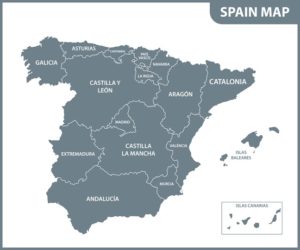
This area, stretching south from the ancient pilgrimage destination of Santiago De Compostela, is characterized by a rugged Celtic coast of inlets, cliffs and sandy beaches, and fertile estuaries long-associated with the production of excellent shellfish. For decades, this prized produce has taken the daily trains from Vigo to the Madrid tapas bars and upscale restaurants.
RELATED: Here’s Why You Should Visit Tarragona: Spain’s Ancient Port on the Mediterranean
Visiting Rías Baixas: How to Explore
For the Winetraveler, the attraction lies in the small estuary towns sheltering from the Atlantic breezes, and the superb combination of seafood and wine available in their restaurants and bars.
Cambados, the unofficial capital of Albariño country, is a striking example of the Galician character, with one of the region’s most beautiful and photogenic squares, the Praza De Fefiñanes. The architecture is worthy of an Italian city, but is hidden away in this provincial town. The palace, or pazo in the local tongue, dominates one side of the square, next to a pristine baroque bridge, with the picturesque 17th-century church of San Benito occupying the eastern side. God and the grape go hand in hand in these parts, and immediately next to the church is a bodega offering the chance to sample the local Albariño vintages.
RECOMMENDED: Take a Rías Baixas Private Tour with a Local: Includes Wine Tasing, Food, Mussels, a Boat Ride and Pickup
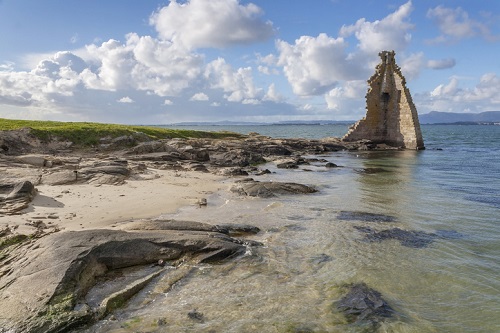
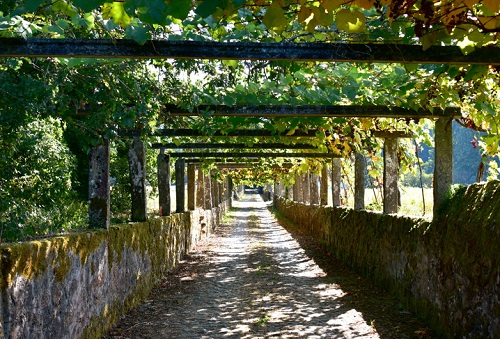
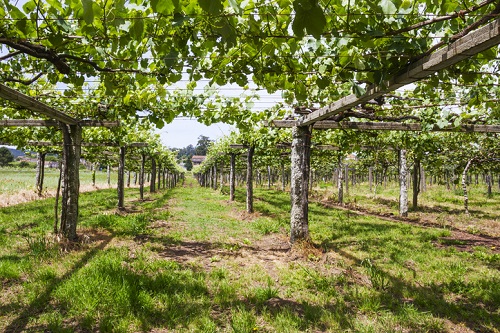
Further down the coast, O Grove is a resort municipality dominated by Spanish families who have been coming here for generations. Its annual festival waits until the season is over in October, when the exuberant Festa Do Mariscos celebrates all kinds of shellfish, washed down by the obligatory Albariño, before Galicians batten down the hatches for the winter’s Atlantic storms.
A bridge over the estuary leads to the island of A Toxa, an exclusive spa getaway dating back to the Franco era, now attempting to recast itself as a wellness resort destination, with outlets selling natural soaps and salt scrubs. The tourist picture opportunity here is a chapel encrusted with seashells, although it seems a little gimmicky compared to the elegant austerity of the many Galician village churches.
Vineyard tours are available at some Albariño producers, which stretch south from the major port of Vigo all the way to the Portuguese border. Producers will elaborate on the grape’s origins, most dismissing the notion that it was brought to Galicia by Cluny monks in the medieval era, and claiming it as a native variety.
Winetraveler Accomodation Suggestion: For a truly luxurious and off-the-beaten-path wine region experience, use Pousada Armenteira as a base for exploring all that Rías Baixas has to offer.
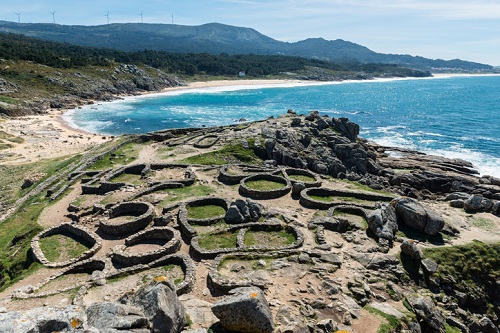
RELATED: 15 of the Best Vineyard Resorts in Spain to Use as a Homebase
Dining in Rías Baixas
After a glass or two, history and culture begin to fade into the background. Albariño is a wine that is at its peak when enjoyed in its local environment. The Rías Baixas region obliges, with numerous elegant but low-key marisquerias or seafood establishments, usually housed in historic stone buildings, offering generous plates of the local marine life, accompanied by the finest Albariño.
Winetravelers are advised to follow the local custom and order the sharing plate, or mariscada, laden platters of whatever shellfish is fresh that day, simply prepared with a slice of lemon and a green salad.
To build an appetite for the feast, there are numerous scenic trails offering hikes around the estuaries and beaches of southern Galicia, with a stiff salty breeze keeping the experience refreshing. The obligatory snack accompaniment on any hike is empanada de berberechos, a flat, crisp pastry made with estuary cockles. Probably with a dash of Albariño added, as with every recipe in this corner of Spain.
Take the Trip to Rías Baixas
First-time visitors to the region will find it hard to resist the charms of Galicia, typified by the rugged coast, the verdant rolling hills and the attractive stone-built villages. The climate, and the local language, are far from typically Spanish, but the welcome is invariably warm, and the wine is reliably excellent.
Frequently Asked Questions about the Rías Baixas Wine Region
You are reading “Learn About Visiting The Rías Baixas Wine Region in Galicia, Spain ” Back To Top
things to do in Rías Baixas, Rías Baixas travel guide: best places to visit in Spain
If you enjoyed this guide, consider joining the Facebook Group to interact with other Winetravelers and for travel inspiration around the world, and be sure to follow along with us on Instagram.
